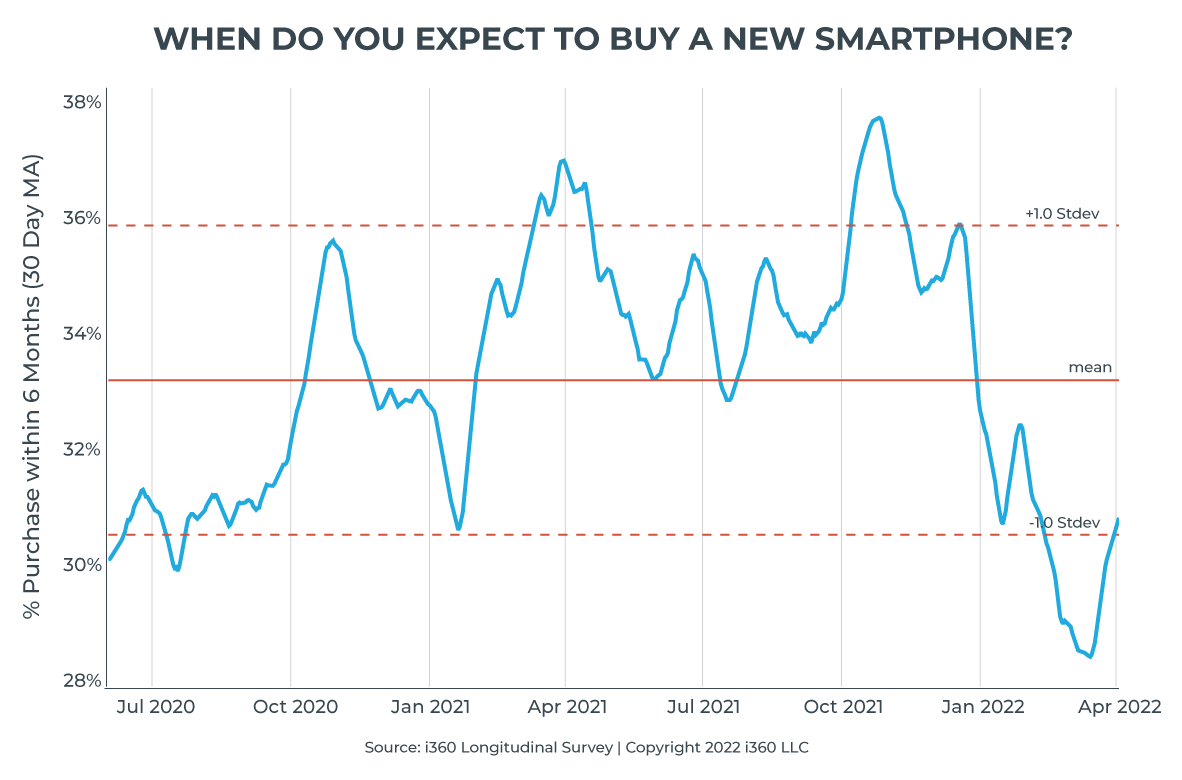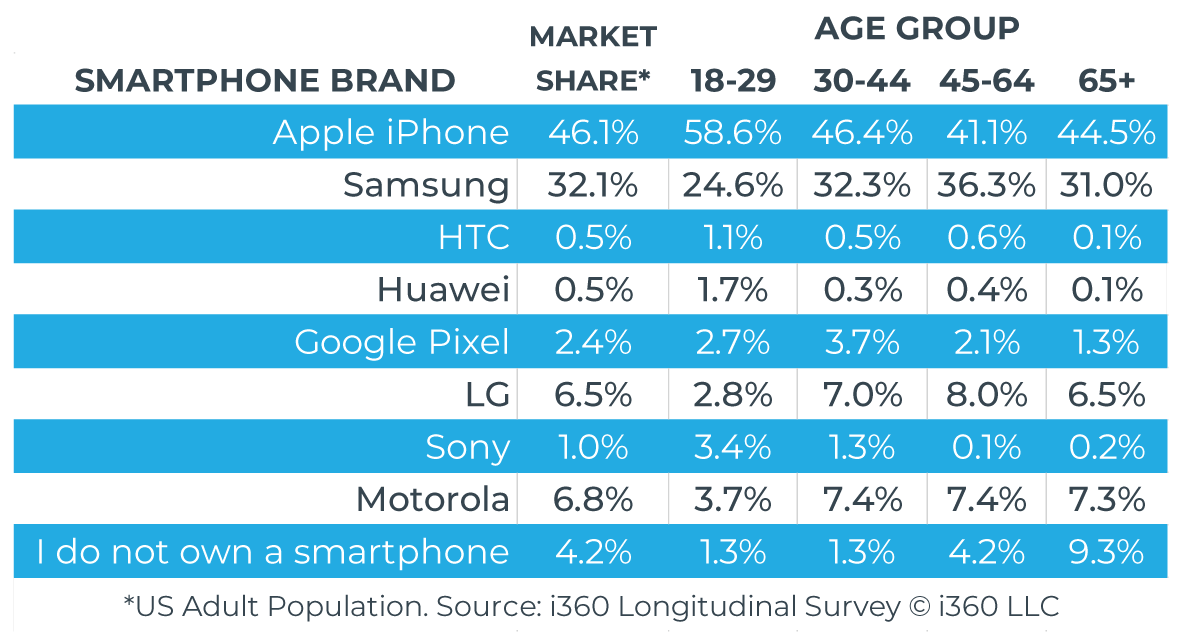When do you expect to buy a new smartphone?

About i360’s Consumer Pulse: The Consumer Pulse asks 1,000, of the 2.5 million US adult panelists, over 150 questions daily. Questions center around key topics such as economy, lifestyle, real estate, automotive, shopping, employment, political opinions, and more.
SMARTPHONE PURCHASE EXPECTATIONS
i360’s Consumer Pulse survey, finds fewer US consumers are planning to purchase a new smartphone. The drop is likely due to consumer unease over the war in Ukraine, higher energy prices, and a return to normal spending habits (more services, less goods). Shown in the chart below, i360’s in house analysts saw a statistically significant drop in the smartphone purchase trends through the end of March.

At the end of Q1, Apple (NASDAQ: AAPL) reportedly cut iPhone SE and Airpod orders in anticipation of a “drop-off in demand for consumer electronics due to economic uncertainty.” Additionally, Taiwan Semiconductor (NYSE: TSM) stated that “demand for smartphones and PC’s were starting to slow.” Market trends, like this, are what i360’s Consumer Pulse anticipates. In fact, our respondents indicated the smartphone demand was dropping well before headlines hit.
According to Pulse, Apple makes up 46% of the market share of smartphones in the US, while Samsung holds roughly 32% of the market. The survey measures across multiple demographics and shows that Apple dominates in the 18-29 age group segment.

Since this subject covers the entire smartphone market, our analysts wanted to see if the change in smartphone expectations indicate hard times for companies providing smartphone components. These companies tend to be higher beta to the smartphone cycle than the producers themselves, and their profits can vary greatly based on the volatility of smartphone demand. The thesis is that sentiment plays a much greater role in their market performance than the mega caps like Samsung and Apple.
Using the teardown of the latest iPhone 13 from iFixit to find the chief suppliers to Apple, i360 analysts built an equally weighted basket of 16 public companies with significant exposure to Apple and other smartphone manufacturers. Next, they adjusted the basket’s returns to the QQQ (Nasdaq 100) ETF, to see if changes in consumer purchase intent could forecast future returns for the smartphone supply chain. Finally, the analysts created a signal if consumer purchase expectations for smartphones was improving, neutral, or deteriorating.

As shown above, the negative sentiment can help avoid losses when investing in these types of companies. The large change in consumer intent led to the steep underperformance of group versus the broader technology sector in March of 2022. No doubt, the trends Apple and Taiwan Semiconductor were seeing impacted their own production forecast and market guidance.
Disclosure: The information in these blog posts, based on i360’s Consumer Pulse, is for informational purposes only and should not be construed as investment advice on any matter.

